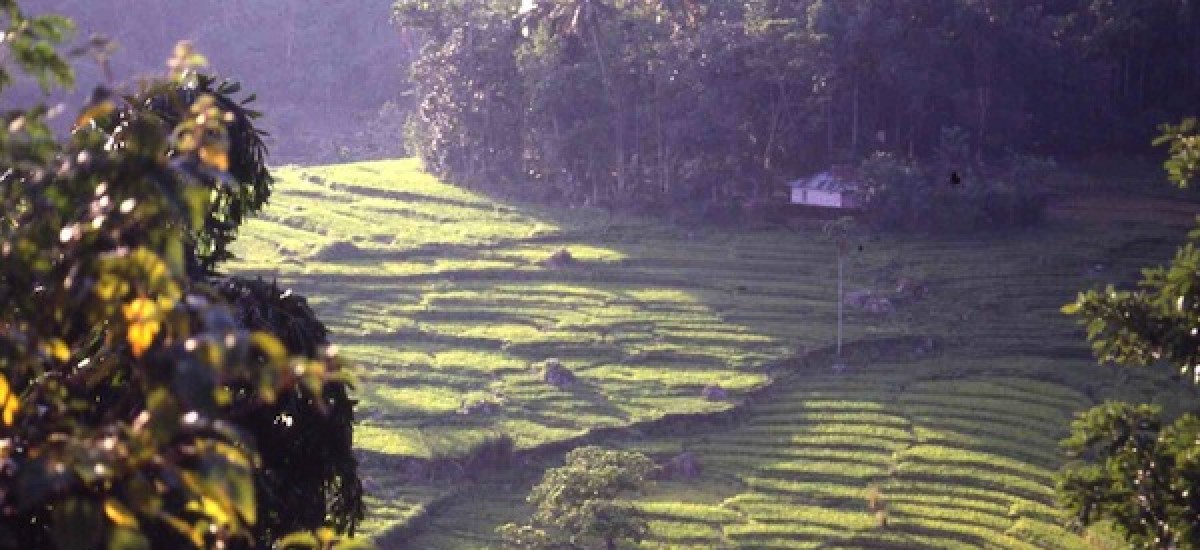The ecological impact of increasing energy input into a system has been well documented. In any ecosystem an increase in the flow of energy tends to organize and simplify that ecosystem, with the destruction of many homeostatic mechanisms of the original system. The loss of the traditional, rice production systems and its simplification, being an example. Further, diversity is now being realized as being important to sustainability. In agriculture, studies of insect communities have shown that pest outbreaks are characteristic of systems with lowered species diversity.
An increase in the input of energy to an ecosystem often provides a useful measure by which ecosystem modification can be addressed. Thus in a heavily energy dependent agricultural system, the natural or biological system has been dispensed with and an artificial environment has been created to allow high levels of production. While it can be argued that such a system of production is sustainable as long as the inputs are provided, it raises biological questions, for this system is clearly not sustainable in a biological sense. It also raises economic questions, especially in regard to input costs and subsidies.
This brings us to a painful reality, is Sri Lankan agriculture independent ? Can we produce food in this country without external (fossil) energy ? Are we on a sustainable trajectory in our planning for growth ? The answer to all these questions is a resounding no ! Just in fertilizer alone, there is an unbelievable subsidy of Rs.50 billion add to it the subsidies for gas and transport and a very disturbing scenario unfolds.
Further, this process has been demonstrated to be increasingly dependent on a steadily increasing quantum of energy input to produce a same unit of output, so once hooked, the subsidy will go up and has to be maintained in the name of political interest.
However, need this be so? History demonstrates that the farming systems of Sri Lanka has concentrated on the same crops and cropping techniques since over 500 B.C. this length of interaction with the environment had produced a co-evolved agro-ecosystem where many components of wild species acted to provide community stability as well as ecosystem stability.
The belief, knowledge and value sets that manifest as culture are also reflected as the artifacts of that culture, be it art, music, dance, myth or literature. These artifacts in turn, reflect the sensitivity of the culture to the environment that it existed in. Thus, societies that have successfully maintained themselves over long periods of time often demonstrate a great sensitivity to the functioning of the local ecosystems. These stable, sustainable, co-evolved ecosystems are very much a characteristic of traditional societies.
This diversity of local cultures and their associated ecosystems are now in a state of decline. In agriculture, the introduction of fossil fuel energy dependent crops ensures the collapse of both. This insensitivity of ‘modern agriculture’ to the complexity of natural systems may stem from the model of reality that it is based upon. Two philosophical models hypothesized by Cobb (1984 ) may be useful in addressing this problem. The mechanical model where a thing in itself is independent of its relations to other things and the ecological model where a thing in itself is the product of its relations to other things. Unfortunately modern management would seem operate on the mechanical model generating management responses without any regard to the consequences of changing system parameters. But unless an ecological model is utilized, such mechanistic approaches often lead to environmental decay.
Studies on agricultural diversity suggest that high measures of diversity are often correlated with environmental stability. A rapid loss in the degree of biodiversity, for instance suggests a loss in ecological stability. Therefore, the measure of biodiversity is a useful indicator of the health of an ecosystem.
The pattern of increasing ecological stability with increasing diversity in land use is also corroborated by studies of both traditional and modern land managers, whose management systems are sustainable and conserve a much higher level of biodiversity than through mechanistic responses. They have recorded that higher levels of diversity in the agricultural field produce positive effects of biological control, spread the risk in marketing and production, as well as distributing labor needs to fit with a single family unit. These traditional methods of land management, have much to contribute to biodiversity conservation and climate adaptation.
However, the much touted ‘development’ in agriculture in Sri Lanka has produced great yeilds that require a huge inflows of foreign energy and outflows of national wealth to sustain it. In this way, we will loose not only our seeds (genes) and our ecosystems, but also our health and the knowledge of who we are. As the 1998 farmer statement to CGIAR noted
“ we farmers, producers of food, respected for our ability to feed populations, were turned into the poisoners of land and living things, including fellow human beings.”
Profit is indeed a great altar to sacrifice humanity on.
References:
Cobb, J. (1984) Theology, Perception and Sustainability of Agriculture In Agricultural Sustainability in a Changing World Order (G.K. Douglass, ed). Westview Press; Boulder, Colorado.


